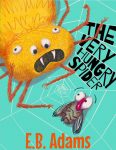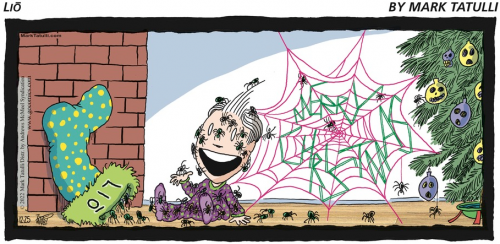It was the first day of fly lab in genetics. I prepare well in advance, setting up stocks of the red-eyed, scarlet-eyed, and brown-eyed flies the students will need for their very first cross, and I always prepare an excess. The students only need about a dozen flies for this first experiment, and I give them hundreds, just in case. They figure out how to tell males from females, distinguish the different eye colors, how to set up the culture media, and how to carefully set up a defined cross. They got it done.
At the end of lab, I do the clean up. I’ve got containers full of anesthetized flies. I pour them all together, red with scarlet with brown, and then take the small mound of sleeping flies to my lab, where the horror begins.
I think my spiders love the semester I teach genetics, because we generate such a surplus. I made hundreds of extra flies this week, in two weeks the students will generate thousands more, and once they’ve scored them and set up the F1 cross, where do you think the leftovers end up? My lab. Where I just shovel all these unconscious flies into the spiders’ cages.
I have to imagine it from the flies’ point of view. One moment they’re happily frolicking, mating, and laying eggs in a paradise for flies, the next they’re knocked out while the humans tinker with them. Then the majority later wake up in a strange barren box. They groggily stir, rise up, and try to fly away, only to get snagged on the lines of silk strung everywhere. There is no escape. They struggle, they see many of their peers similarly trapped, and then…the spider creeps out and industriously starts wrapping everyone up. Helpless, they can only wait until their turn to be envenomated and sucked dry.
To the spiders, it’s like Christmas. And that makes me Santa Claus.
You should see the spiders right now. It’s just rapacious gluttony everywhere. It’s glorious.









